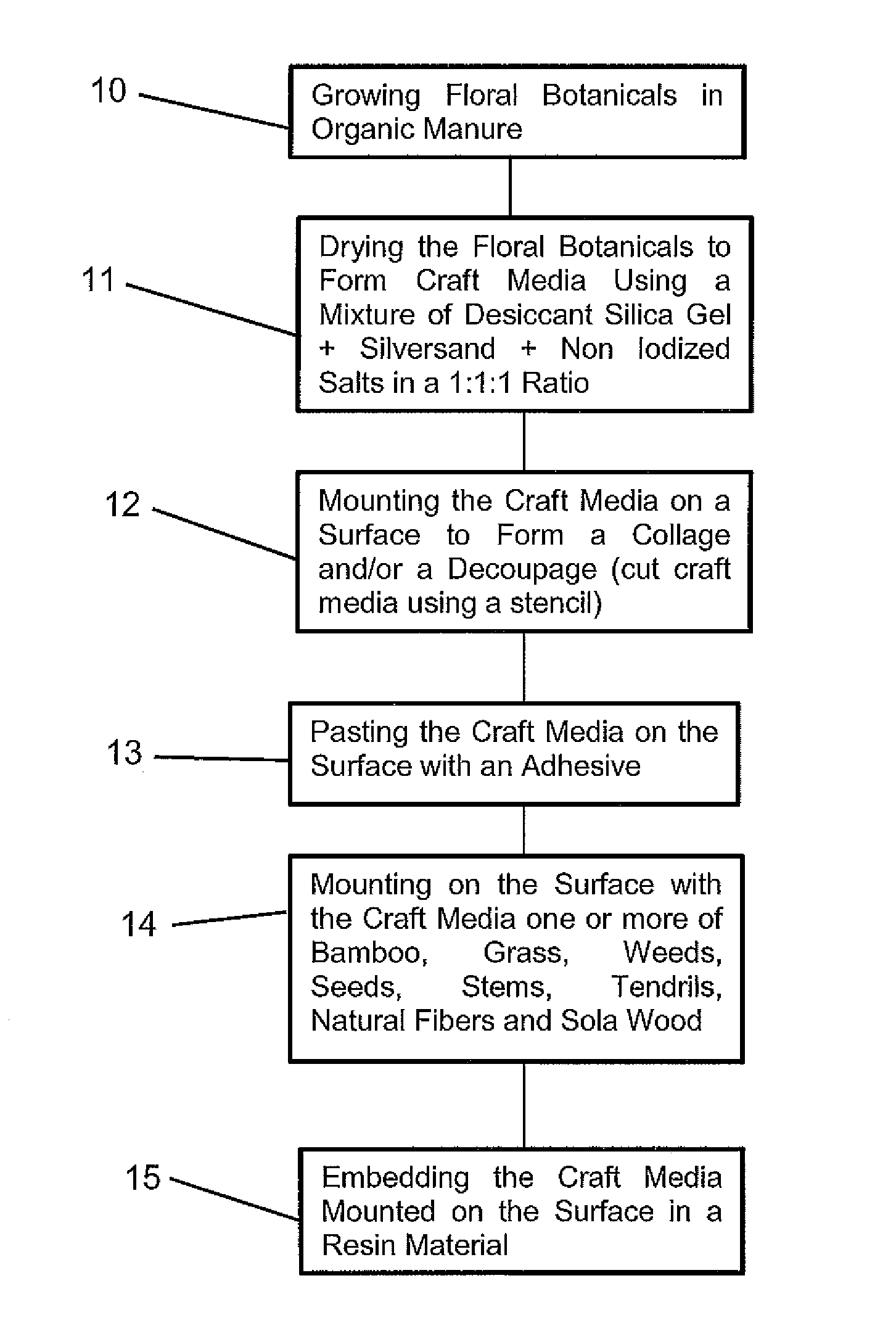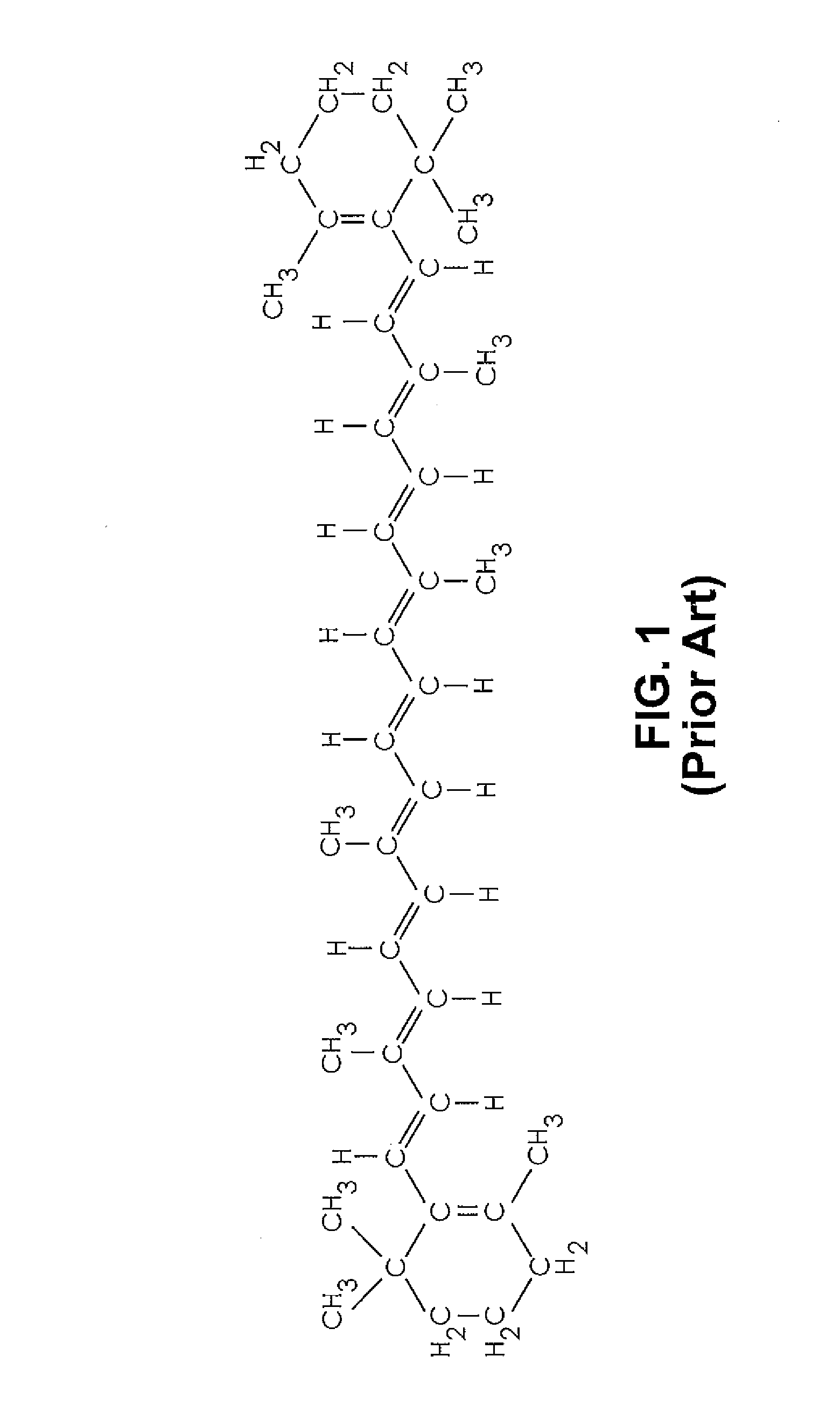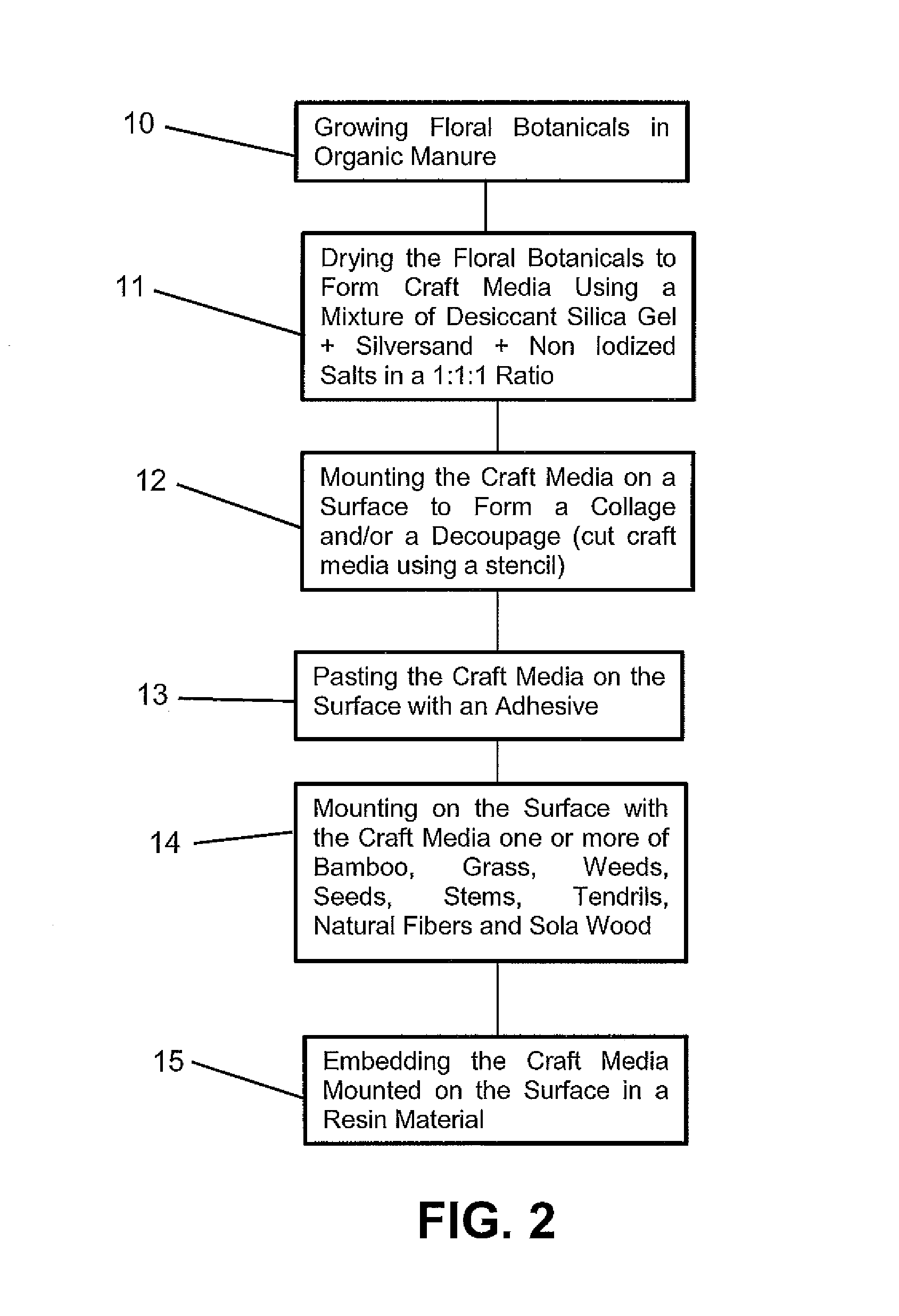Process of floral botanical collage decoupage
a floral botanical and collage technology, applied in the field of floral botanical collage decoupage, can solve the problems of poor design, poor texture, poor quality of obtained products, poor handcraft technical aspects, etc., and achieve the effects of reducing the senescence process, reducing the acidity of plant structure, and reducing the tim
- Summary
- Abstract
- Description
- Claims
- Application Information
AI Technical Summary
Benefits of technology
Problems solved by technology
Method used
Image
Examples
Embodiment Construction
[0034]The FIG. 1 shows the structure of beta-carotene, one of the most abundant carotenoids. The system of alternating single and double bonds that is in this molecule runs along the hydrocarbon chain that connects the two benzene rings. The electrons of the double bonds actually migrate though the chain and also make this molecule an efficient absorber of light. The long system of alternating double and single bonds constitutes a conjugated system in which the π electrons are effectively delocalized over the entire length of the polyene chain. This feature is responsible for the molecular shape, chemical reactivity and light absorbing properties, and hence color of carotenoids (Britton, 1995). At least seven conjugated double bonds are needed for the carotenoid to impart color. Each double bond in the polyene chain of a carotenoid can exist in two configurations, trans or cisgeometrical isomers. Most carotenoids occur in nature predominantly or entirely in the all trans form (stabl...
PUM
 Login to View More
Login to View More Abstract
Description
Claims
Application Information
 Login to View More
Login to View More - R&D
- Intellectual Property
- Life Sciences
- Materials
- Tech Scout
- Unparalleled Data Quality
- Higher Quality Content
- 60% Fewer Hallucinations
Browse by: Latest US Patents, China's latest patents, Technical Efficacy Thesaurus, Application Domain, Technology Topic, Popular Technical Reports.
© 2025 PatSnap. All rights reserved.Legal|Privacy policy|Modern Slavery Act Transparency Statement|Sitemap|About US| Contact US: help@patsnap.com



